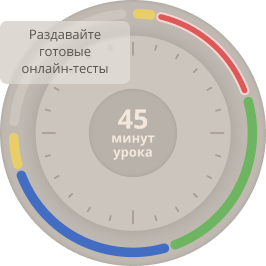

СДЕЛАЙТЕ СВОИ УРОКИ ЕЩЁ ЭФФЕКТИВНЕЕ, А ЖИЗНЬ СВОБОДНЕЕ
Благодаря готовым учебным материалам для работы в классе и дистанционно
Скидки до 50 % на комплекты
только до
Готовые ключевые этапы урока всегда будут у вас под рукой
Организационный момент
Проверка знаний
Объяснение материала
Закрепление изученного
Итоги урока

Everything You Need to Know About Oxygen Cylinders: Types, Uses, and Safety
Oxygen cylinders are essential medical devices that store and supply medical-grade oxygen to individuals with breathing difficulties or chronic respiratory conditions. With the growing demand for home-based healthcare and emergency preparedness, the importance of understanding how oxygen cylinders work, their types, usage, and safety cannot be overstated.
In this detailed guide, we’ll explore everything about from their role in medical care to tips for safe handling and choosing the right one.
What Is an Oxygen Cylinder?
An oxygen cylinder is a high-pressure container used to store compressed oxygen gas, usually at 2000 to 3000 PSI (pounds per square inch). These cylinders are used to deliver oxygen to patients who cannot get enough from ambient air due to medical conditions such as:
-
Chronic Obstructive Pulmonary Disease (COPD)
-
Asthma
-
COVID-19 and post-COVID care
-
Heart failure
-
Pneumonia
-
Sleep apnea
Oxygen is delivered via a mask or nasal cannula connected to a regulator that controls the flow rate of the gas.
Types of Oxygen Cylinders
Oxygen cylinders come in various sizes and materials depending on their use-case. Here are the most commonly used types:
1. Portable Oxygen Cylinders
Portable oxygen cylinders are designed for mobility. These are ideal for patients who need oxygen support outside their homes or during travel.
-
Capacity: 1–5 liters
-
Material: Lightweight aluminum
-
Use Case: Emergency backup, travel, outdoor use
2. Medium Oxygen Cylinders
Medium-sized oxygen cylinders are commonly used for daily in-home therapy. They offer a balance between portability and longer oxygen supply.
-
Capacity: 6–15 liters
-
Material: Steel or aluminum
-
Use Case: Home treatment, non-emergency care
3. Large Oxygen Cylinders
These are heavy-duty cylinders typically used in hospitals, clinics, or for patients requiring continuous oxygen therapy.
-
Capacity: 40–50 liters
-
Material: High-strength steel
-
Use Case: ICU, long-term care, hospital setups
How Does an Oxygen Cylinder Work?
An oxygen cylinder works by storing compressed medical oxygen, which is released and regulated through a pressure valve and flow meter. The oxygen is then delivered to the patient via an oxygen mask or nasal cannula.
Key Components:
-
Cylinder valve: Controls the release of oxygen
-
Pressure regulator: Reduces pressure for safe delivery
-
Flow meter: Adjusts and displays flow rate (liters per minute)
-
Delivery system: Mask or nasal cannula
Oxygen Cylinder Sizes and Their Duration
The amount of time an oxygen cylinder lasts depends on its size and the flow rate set for the patient. Here’s a basic estimate:
| Cylinder Size | Flow Rate (L/min) | Approx. Usage Time |
|---|---|---|
| 5 Liters | 2 L/min | 2–3 hours |
| 10 Liters | 2 L/min | 4–5 hours |
| 40 Liters | 2 L/min | 24–30 hours |
Note: Duration decreases with higher flow rates.
Uses of Oxygen Cylinders
Oxygen cylinders are used across different environments and for various medical conditions. Key use cases include:
1. Medical Use at Hospitals
Hospitals use oxygen cylinders to support patients during surgery, intensive care, and emergency interventions.
2. Home Healthcare
For patients with chronic respiratory illnesses, doctors often prescribe home oxygen therapy using portable or medium cylinders.
3. Ambulances and Emergency Services
Emergency medical services rely on oxygen cylinders to stabilize patients during transport.
4. Disaster Preparedness
Oxygen cylinders are also stocked in disaster response units for mass casualty incidents, especially during pandemics or natural disasters.
Benefits of Using Oxygen Cylinders
Using an oxygen cylinder offers multiple advantages for patients and caregivers:
-
Instant access to medical oxygen
-
Highly portable (for smaller sizes)
-
Does not require electricity to operate
-
Useful during power outages
-
Reliable for emergency or temporary oxygen needs
Oxygen Cylinder vs. Oxygen Concentrator
While both devices are used to deliver medical oxygen, there are key differences:
| Feature | Oxygen Cylinder | Oxygen Concentrator |
|---|---|---|
| Power Requirement | No | Requires electricity |
| Portability | Portable in small sizes | Less portable |
| Oxygen Supply Duration | Limited to tank size | Unlimited as long as powered |
| Refill Needed | Yes | No |
| Ideal Use | Short-term/emergency | Long-term/home therapy |
For long-term therapy, oxygen concentrators are preferred, while oxygen cylinders are better for backup and emergency use.
Safety Tips for Using an Oxygen Cylinder
Safety is critical when handling compressed oxygen. Follow these precautions to minimize risks:
-
Keep away from open flames and heat sources
-
Store cylinders upright in a well-ventilated area
-
Do not smoke near oxygen
-
Check for leaks using soapy water (never use open flames)
-
Use only approved regulators and accessories
-
Ensure regular servicing and cleaning
Improper handling of oxygen cylinders can result in fire hazards or equipment malfunction.
How to Choose the Right Oxygen Cylinder
When selecting an oxygen cylinder, consider the following:
-
Oxygen requirement (flow rate and duration)
-
Portability needs
-
Home vs. hospital use
-
Availability of refill services
-
Budget and accessories included
Consult a healthcare professional before making a purchase to ensure the cylinder meets your medical needs.
Cost of Oxygen Cylinders
The price of an oxygen cylinder depends on its size, material, and whether it comes with additional equipment such as regulators or masks.
Average Price Ranges (USD):
-
Portable (1–5L): $40 – $100
-
Medium (6–15L): $100 – $180
-
Large (40–50L): $200 – $300
Refill prices vary by region and supplier, typically ranging from $10 to $50 per refill.
Frequently Asked Questions (FAQs)
Q1: Can I buy an oxygen cylinder without a prescription? In many countries, medical-grade oxygen cylinders require a doctor’s prescription.
Q2: How long can an oxygen cylinder be stored? If stored correctly, oxygen cylinders can last up to 5 years before retesting is needed.
Q3: What’s the difference between industrial and medical oxygen? Medical oxygen is purified and regulated for human use. Industrial oxygen may contain impurities and is not safe for inhalation.
Q4: Can I refill an oxygen cylinder at home? No, oxygen cylinders must be refilled by certified refill stations to ensure purity and safety.
Q5: Is it safe to travel with an oxygen cylinder? Yes, but you should check with airlines and transport authorities for regulations and safety guidelines.
Services offers reliable and fast delivery of medical-grade oxygen cylinders across Lahore. They provide refilling, rental, and emergency supply services for home and hospital use. With a focus on quality and safety, they ensure all cylinders are properly sanitized and certified. Their team is available 24/7 to support patients in urgent need. Lahore Oxygen is a trusted name for dependable oxygen solutions in the city.
Conclusion
An oxygen cylinder is a vital component of modern medical care, especially for individuals with respiratory illnesses or in emergency situations. Whether for hospital use or home therapy, these devices offer a dependable source of oxygen when it's needed most. By understanding the types, usage, and safety measures, patients and caregivers can make informed decisions and use oxygen cylinders effectively and safely.
If you are considering oxygen therapy, consult with a medical professional to determine the right size, flow rate, and delivery method for your specific condition.





